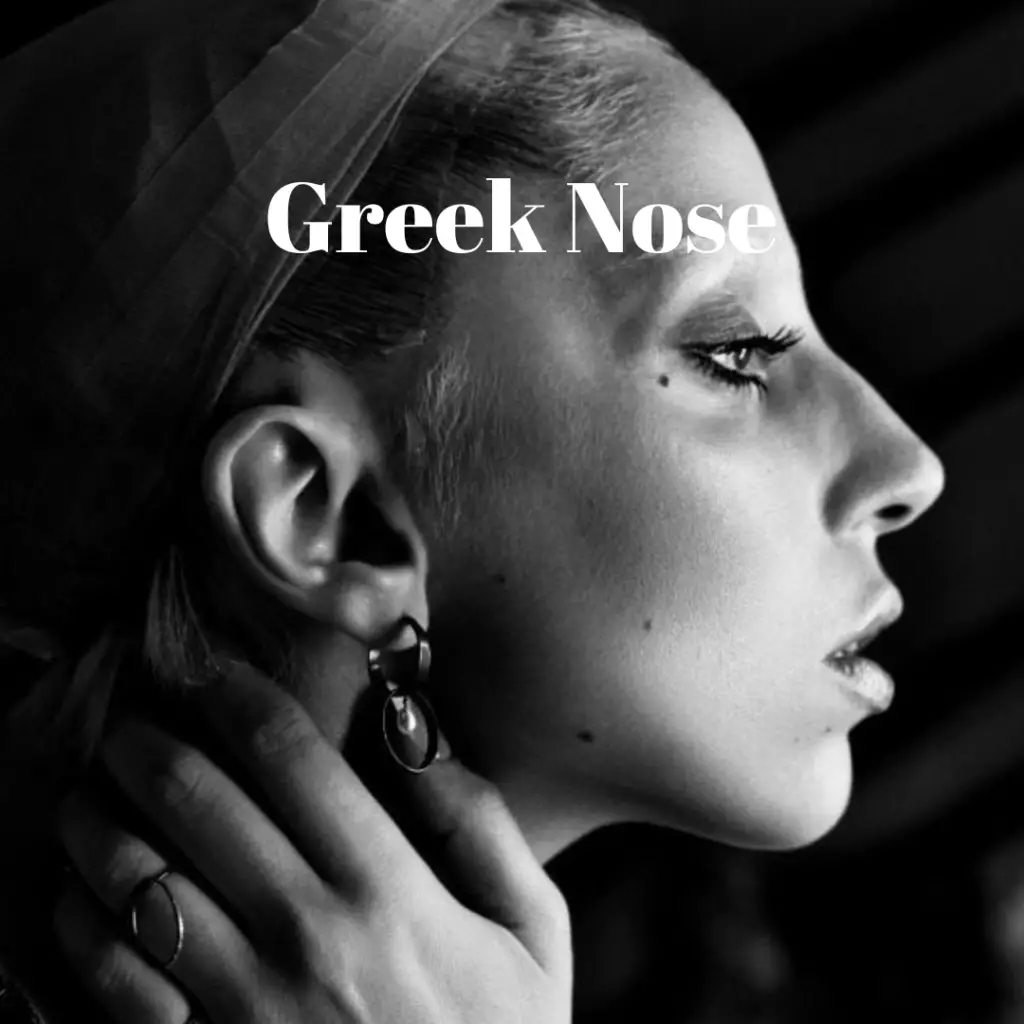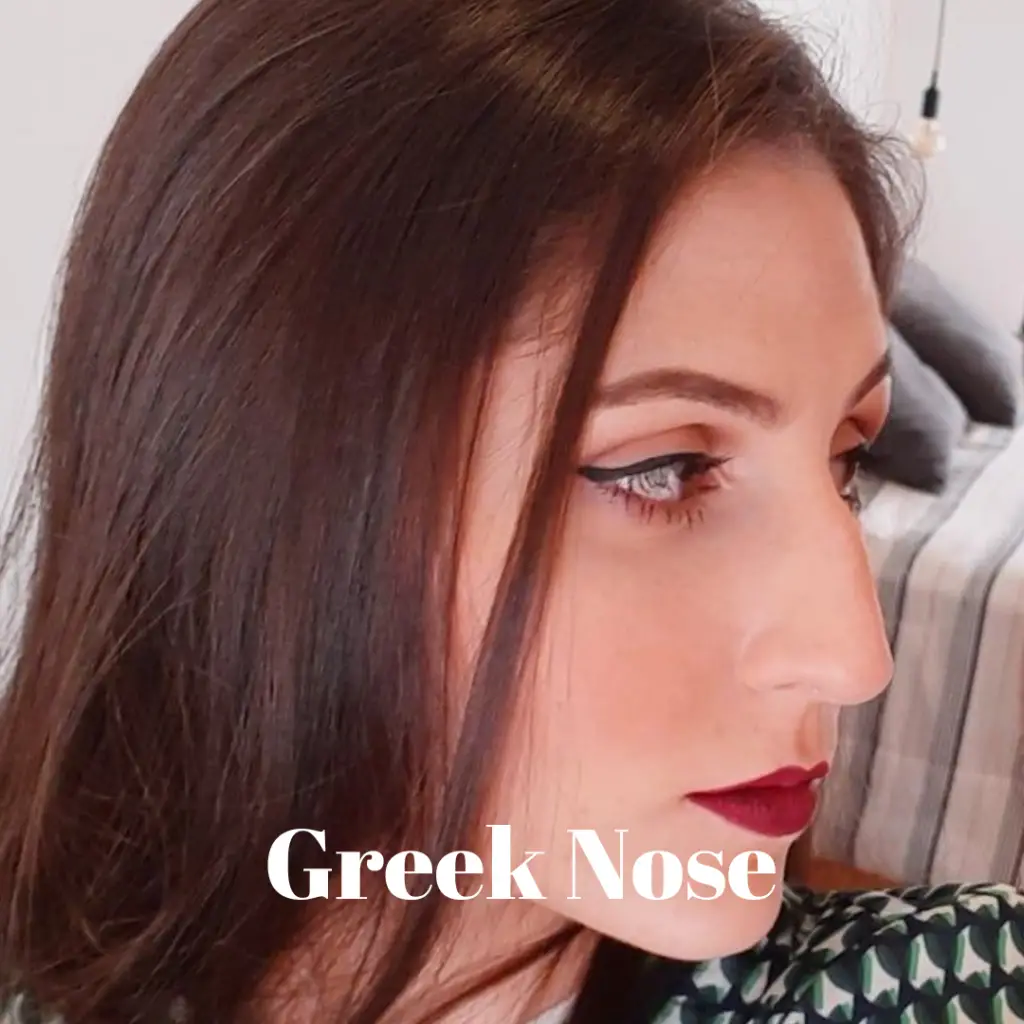An intriguing exploration of the Greek nose
The Greek nose has long fascinated scholars, artists, and individuals alike. With its distinctive shape and aesthetic appeal, it has left an indelible mark on history, art, and culture. In this comprehensive article, we delve deep into the captivating world of the Greek nose, unraveling its rich history, unique features, and cultural significance.

II. Understanding the Greek Nose
Defining the Greek nose
The Greek nose is characterized by its straight profile and a well-defined bridge. Unlike other nose types, it showcases a balanced and harmonious appearance. Its elegance and proportionate shape have made it a symbol of beauty and refinement.
Characteristics that distinguish it from other nose types
One key characteristic of the Greek nose is its straightness. While other nose types may have curves or hooks, the Greek nose follows a linear trajectory from the brow ridge to the tip. This straight profile contributes to its aesthetic appeal and distinguishes it from other nose shapes.
| Characteristic | Greek Nose | Other Nose Types |
| Shape | Straight and well-proportioned | Varied shapes, including straight, curved, or hooked |
| Nasal Bridge | Prominent and straight | Varies in height and curvature |
| Nasal Tip | Pointed and slightly upturned | Can be rounded, drooping, or prominent |
| Nostrils | Well-defined and symmetrical | Vary in shape and size, can be wide or narrow |
| Profile | Straight or slightly concave | May have a convex or concave profile |
| Overall Proportions | Harmonious and balanced | Can exhibit different proportions depending on ethnicity |
| Genetic Prevalence | Found in various populations worldwide | Specific nose types can be more common in certain ethnicities |
| Cultural Significance | Symbolizes beauty, aesthetic ideals, and cultural heritage | Other nose types may hold cultural significance in different contexts |
Genetic and environmental factors contributing to its prevalence
The prevalence of the Greek nose can be attributed to a combination of genetic and environmental factors. Studies suggest that genetic inheritance plays a significant role in determining nose shape. Additionally, environmental factors such as climate, geography, and cultural practices may also influence the prevalence of the Greek nose in certain populations.
III. Historical Context
The role of the Greek nose in ancient Greek art and sculpture
In ancient Greece, the Greek nose held immense importance in art and sculpture. Renowned sculptors meticulously crafted statues with idealized facial features, including the Greek nose. These statues became iconic representations of beauty and perfection, setting the standards for artistic expression and physical aesthetics.
Symbolism and cultural significance associated with the Greek nose
The Greek nose became a symbol of classical beauty and cultural pride. Its representation in ancient Greek mythology and literature further solidified its significance. It was often associated with noble and divine qualities, symbolizing intelligence, strength, and grace.
Its portrayal in literature and mythology
Throughout Greek literature and mythology, references to the Greek nose abound. Heroes and deities were described as possessing this distinctive feature, emphasizing their exceptional qualities. The Greek nose became synonymous with power, wisdom, and superior character traits.
IV. Anatomy and Structure
Examination of the anatomical features of the Greek nose
To understand the Greek nose, it is essential to explore its anatomical structure. The nose comprises bone, cartilage, and a nasal septum. The bone provides the underlying structure, while cartilage shapes the nose’s external appearance. The nasal septum divides the nasal cavity into two chambers and plays a crucial role in breathing and airflow.
The role of bone, cartilage, and nasal septum
The bone provides structural support to the nose, ensuring its stability and shape. Cartilage, on the other hand, gives flexibility and determines the nose’s contour. The nasal septum, composed of bone and cartilage, separates the nostrils and helps regulate airflow during breathing.
How nasal proportions contribute to the Greek nose aesthetic
Proportions play a vital role in defining the Greek nose aesthetic. The length, width, and height of the nose should harmonize with other facial features, creating a balanced and visually pleasing appearance. The Greek nose exemplifies these ideal proportions, contributing to its timeless beauty.
V. Greek Nose in Different Populations
Prevalence and variations of the Greek nose across different ethnicities
While the Greek nose is often associated with ancient Greece, it can be found in various populations worldwide. Its prevalence extends beyond individuals of Greek descent, with people from different ethnic backgrounds exhibiting this nose type. This demonstrates the diverse nature of human physical features.
Theories on the spread and migration of the Greek nose
Several theories exist regarding the spread and migration of the Greek nose across different regions. Some suggest that it might have been influenced by ancient trade routes, cultural exchanges, and intermarriage between different populations. Others propose genetic factors and natural selection as key drivers for the prevalence of the Greek nose in certain areas.
Notable historical figures with Greek noses
Throughout history, numerous notable figures have possessed the distinct Greek nose. From philosophers and statesmen to artists and scholars, individuals with Greek noses have left an indelible mark on various fields. Their contributions have shaped the course of human civilization and influenced cultural perceptions of beauty.
VI. Beauty Standards and the Greek Nose
The impact of Greek nose on beauty ideals throughout history
The Greek nose has played a significant role in shaping beauty ideals over the centuries. Its association with ancient Greek art, mythology, and cultural significance has contributed to its portrayal as an epitome of beauty and perfection. Beauty standards influenced by the Greek nose have transcended time, leaving a lasting legacy.
Perception of the Greek nose in contemporary society
In contemporary society, perceptions of beauty have evolved to embrace diversity and individuality. While the Greek nose continues to be admired for its aesthetic appeal, it is no longer the sole criterion for beauty. People now appreciate a broader spectrum of nose types, celebrating the uniqueness of each individual’s features.
Influences on beauty standards in different cultures
Beauty standards vary across cultures, influenced by factors such as geography, history, and societal norms. The Greek nose’s impact on beauty ideals extends beyond Greece, with diverse cultures incorporating elements of its aesthetic appeal into their own standards. This fusion of influences showcases the dynamic nature of beauty perceptions worldwide.

VII. Medical Aspects
Health considerations related to the Greek nose
From a medical perspective, the Greek nose does not pose any inherent health risks or complications. Its anatomical structure is similar to other nose types, and individuals with Greek noses generally enjoy normal respiratory function and overall well-being. However, individual variations in nasal anatomy can affect breathing patterns and may require medical intervention in certain cases.
Breathing and respiratory implications
The Greek nose, like any other nose type, plays a crucial role in breathing and maintaining respiratory health. Its well-formed nasal passages allow for efficient airflow, ensuring proper oxygenation of the body. However, deviations in nasal structure or underlying conditions can impact breathing and necessitate medical evaluation and treatment.
Surgical procedures and treatments for altering the Greek nose
In cases where individuals desire to alter the appearance of their Greek nose, surgical procedures such as rhinoplasty can be considered. Rhinoplasty allows for reshaping the nose to achieve desired aesthetic outcomes while maintaining functionality. It is essential to consult with qualified medical professionals to understand the potential risks and benefits associated with such procedures.
VIII. Cultural Implications
Greek nose as a symbol of identity and heritage
Within Greek communities, the Greek nose holds deep cultural significance. It serves as a symbol of identity, heritage, and connection to ancient Greece. Individuals with Greek noses often take pride in their distinctive features, embracing them as a testament to their rich cultural heritage.
Its representation in Greek diaspora communities
The Greek diaspora, spread across the globe, has carried the cultural heritage and physical features, including the Greek nose, to various countries. In diaspora communities, the Greek nose serves as a unifying element, symbolizing shared ancestry and fostering a sense of belonging among individuals with Greek heritage.
Cultural perceptions and stereotypes surrounding the Greek nose
Like any physical feature associated with specific cultural or ethnic groups, the Greek nose may be subject to stereotypes or misconceptions. It is important to challenge and dispel these stereotypes, promoting understanding and appreciation of the diverse range of nose types and facial features present within Greek and other communities.
IX. Evolution of Nose Ideals
Shifting trends in nose aesthetics over time
Nose aesthetics have evolved significantly throughout history, influenced by societal, cultural, and artistic trends. From the idealized Greek nose of ancient times to different nose preferences in different eras, there has been a dynamic shift in what is considered attractive. These changes reflect the ever-changing nature of beauty standards.
The influence of media and celebrities on nose preferences
In contemporary times, the media and celebrity culture have a substantial impact on shaping beauty ideals, including nose preferences. The portrayal of certain nose types by influential figures can influence trends and the perception of attractiveness. However, it is important to recognize and embrace diverse nose types beyond the influence of media.
Modern societal acceptance of diverse nose types
In recent years, there has been a growing movement towards celebrating and accepting diverse nose types. Modern society recognizes that beauty comes in various forms, and there is no one-size-fits-all ideal. This acceptance promotes inclusivity, allowing individuals to embrace their unique facial features, including the Greek nose.
X. The Greek Nose in Art and Media
Portrayal of the Greek nose in contemporary art
Contemporary artists continue to find inspiration in the Greek nose, incorporating its unique characteristics into their artistic creations. Paintings, sculptures, and mixed media artworks often feature individuals with Greek noses, celebrating the beauty and cultural significance associated with this nose type.
Its significance in film, television, and photography
The Greek nose’s visual appeal and cultural connotations have made it a desirable feature in the realm of film, television, and photography. It is not uncommon to see actors, models, and performers with Greek noses gracing screens and magazine covers, adding an element of sophistication and classical beauty to visual media.
Artists and photographers who celebrate the Greek nose
Various artists and photographers have dedicated their work to celebrate the beauty of the Greek nose. Through their lens or brushstrokes, they capture the grace and allure of this distinctive feature, challenging conventional beauty standards and encouraging viewers to appreciate the diversity of human facial aesthetics.
XI. Self-Perception and Confidence
Personal experiences of individuals with Greek noses
Individuals with Greek noses have diverse experiences and perspectives regarding their features. Some may embrace their nose with confidence and pride, recognizing its cultural significance and aesthetic appeal. Others may face societal pressure or struggle with self-acceptance. It is important to foster a positive self-image and promote self-confidence for individuals with Greek noses and all other nose types.
Psychological impact and self-esteem considerations
Physical appearance, including the nose, can have an impact on an individual’s psychological well-being and self-esteem. It is crucial to promote body positivity and encourage individuals to embrace their unique features. Cultivating self-acceptance and a healthy self-image contributes to overall mental and emotional well-being.
Embracing and appreciating individual beauty
True beauty lies in individuality and diversity. Embracing and appreciating one’s unique features, including the Greek nose, fosters self-love and acceptance. It is essential to celebrate the distinctiveness of each person’s appearance, recognizing that beauty encompasses a multitude of shapes, sizes, and features.
XII. Cultural Heritage and Pride
Connection between the Greek nose and Greek cultural identity
The Greek nose serves as a tangible link to Greek cultural heritage and identity. It symbolizes the ancient roots of Greek civilization and the enduring legacy of Greek art, mythology, and philosophy. Embracing the Greek nose can be an expression of cultural pride and a celebration of the rich history and traditions associated with Greece.
Preserving cultural heritage through the Greek nose
The Greek nose, along with other cultural symbols, plays a role in preserving and transmitting Greek cultural heritage to future generations. By embracing and celebrating this distinctive feature, individuals contribute to the preservation and appreciation of Greek traditions, customs, and history.
In conclusion, the Greek nose encompasses a fascinating blend of history, art, anatomy, and cultural significance. Its straight profile, ideal proportions, and representation in ancient Greek art and literature have made it a symbol of beauty and cultural pride. Understanding and appreciating the Greek nose involves exploring its historical context, anatomical structure, cultural implications, and impact on beauty standards. Embracing diverse nose types, including the Greek nose, fosters a sense of cultural pride, individual confidence, and appreciation for the richness of human facial aesthetics.
Recommended for you:
Eyebrows play a significant role in enhancing the...
Doe eyes are a term used to describe a particular...
A physical glow up can be a transformative and em...
Who doesn't want to have glowing, radiant skin? A...
If you have a diamond shaped face, your main goal...
The bulbous nose is a common concern among indivi...
